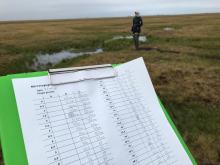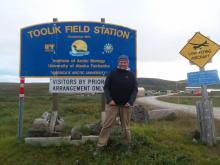IceCube and The Askaryan Radio Array 2018
What Are They Doing?
 Group photo of all neutrino hunters currently at the ceremonial South Pole. Photo by Rishabh Khandelwal.
Group photo of all neutrino hunters currently at the ceremonial South Pole. Photo by Rishabh Khandelwal.
IceCube is located at the South Pole and records the interactions of a nearly massless sub-atomic messenger particle called the neutrino. IceCube searches for neutrinos from the most violent astrophysical sources: events like exploding stars, gamma ray bursts, and cataclysmic phenomena involving black holes and neutron stars. The IceCube Neutrino Observatory is a powerful tool to search for dark matter, and could reveal the new physical processes associated with the enigmatic origin of the highest energy particles in nature. In addition, IceCube studies the neutrinos themselves using the 100,000 neutrinos detected per year produced by cosmic rays in the atmosphere. Their energies far exceed those from accelerator beams. IceCube encompasses a cubic kilometer of instrumented ice, and is the largest detector by volume ever built.
The fully built ARA project, also located at the South Pole, will have an effective volume 100 times bigger than IceCube. The trade off is that it is only capable of observing radio waves from extremely high energy neutrinos, a million times more energetic than the neutrinos produced by cosmic rays in the atmosphere. This neutrinos are extremely rare, which is why such a large detector is needed to increase the chance of seeing one.







